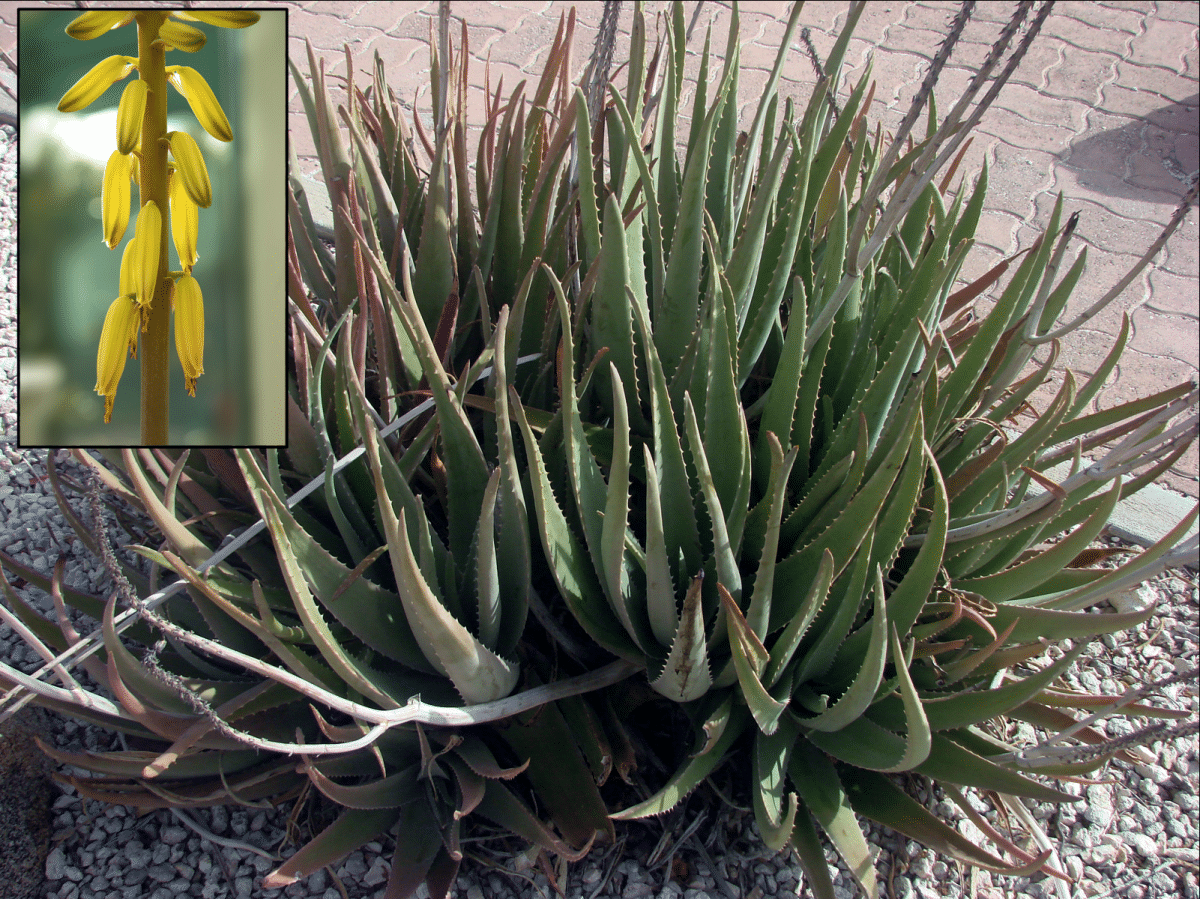
Image – Wikimedia/MidgleyDJ
Aloe vera is a very popular species: we grow it in gardens and on patios, as well as on terraces or balconies. We also use it for our benefit, taking advantage of its medicinal properties. It is so present among us that it began to be believed that there were different types of Aloe vera.
Some with white spots, others green; some with longer and narrower leaves than others, or with different flowers. But If you want to know if there are or different types of Aloe vera, then we will explain it to you.
Are there different types of Aloe vera?
The answer is: No.. For many, many years it was thought so; In fact, if we investigate its taxonomy, that is, the science that deals with classifying living beings by grouping them into categories such as family or gender, we will see that since 1753, which was when Carlos Linnaeus gave it the name of Aloe vera, until 1880, it has been given up to 17 different names:
- Aloe barbadensis Miller.,1768.
- Aloe barbadensis there. chinensis Hawaii, 1819
- Aloe chinensis Steud. former Baker, 1877
- aloe elongata Murray, 1789
- aloe flava Person, 1805
- aloe indicates Royale, 1839
- Aloe spear All., 1890.
- Aloe littoralis J. König ex Baker, 1880 nom. invalid
- aloe maculate Forsk.,1775 name illeg.
- Aloe perfoliata there. barbadensis (Mill.) Aiton, 1789
- Aloe perfoliata there. true L., 1753.
- Aloe rubescens A.D., 1799
- Aloe variegata Forsk,.1775 name illeg.
- Aloe vera there. chinensis (Steud. ex-Baker) Baker, 1880
- Aloe vera there. launch Baker, 1880
- Aloe vera there. littoralis J. König ex Baker, 1880
- aloe vulgaris lam., 1783
At present, it is known that of all these, A. maculata, A. perfoliata and A. variegata are three types of Aloe other than A. vera. The rest are synonyms, which means that they are names that designate the same species: A. vera.
Aloe vera with or without spots

Image – Flickr/Fotero
The white spots that we sometimes see on the leaves can create a lot of confusion. Are they different varieties? Not at all: simply, those who do have them are younger than those who don't. Indeed: a Aloe vera When young, it is usual to have green leaves with white spots, but as it grows, it stops having so many, and sometimes these are non-existent.
And no, the gel Aloe vera with spots is no more or less beneficial than that of one without. Moreover, it is identical. Now yes that you must bear in mind that you must wait until the plant is at least 4 years old and blooms, since if you pull the leaves off a young aloe, you will slow down its growth and could weaken it.
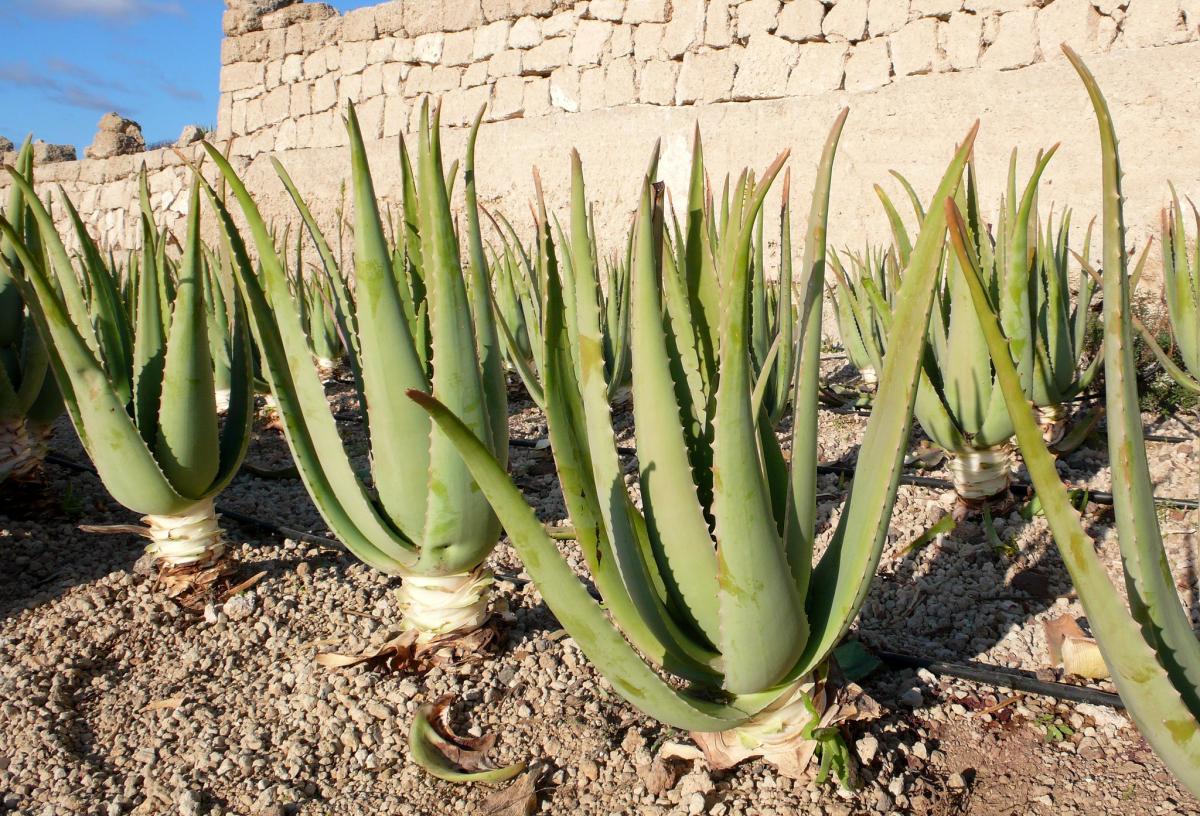
What are the characteristics of Aloe vera?
It is a plant that may or may not have a small stem about 30 centimeters long, from which a rosette of green leaves sprouts, with or without spots., and fleshy up to 50 centimeters long by about 7 centimeters wide. Its edges are jagged, with teeth that are hard to the touch but completely harmless, since they measure about 2 millimeters. From 4 years of age it begins to bloom, producing a floral cluster with yellow flowers whose height can reach 1 meter.
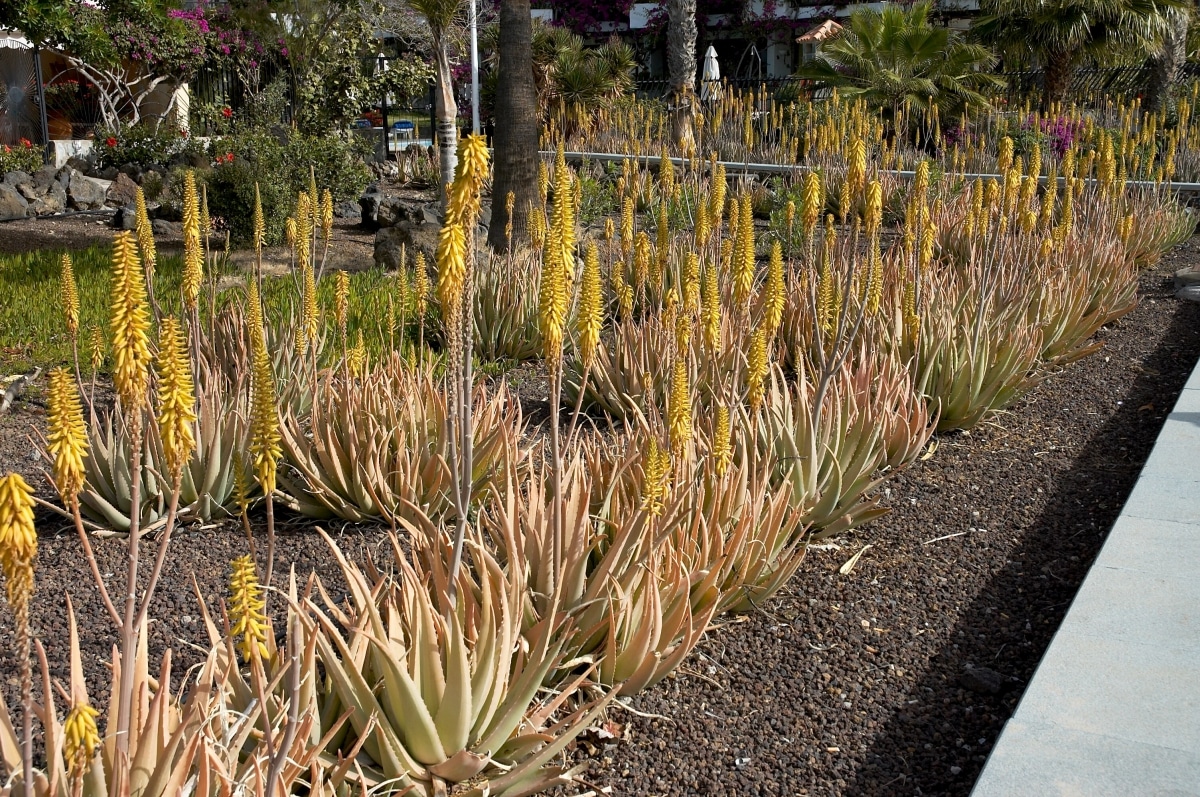
It tends to produce several suckers throughout its life, although these can be easily separated from the mother plant as soon as they reach 10 centimeters in height and planted elsewhere. This will be done in spring, when the minimum temperatures exceed 15ºC.
What types of aloe can be confused with the Aloe vera?
There are several widely cultivated aloes that resemble A. vera, such as the following:
Aloe arborescens

Image - Wikimedia / Ton Rulkens
El Aloe arborescens It is a bushy plant that reaches a height of 1-1,5 meters. It has glaucous green leaves, with toothed margins. Its flowers are grouped in clusters, and are red-orange in color. These sprout in winter-spring, but it takes several years to flower.
Aloe aristata (is now Aristaloe aristata)

Image - Wikimedia / Yercaud-elango
The formerly known as Aloe aristata, It is a kind of succulent plant with dark green triangular leaves with white dots that never lose. At their ends they have a kind of very short white hair, about 1 centimeter long. It grows up to 10-15 centimeters in height, although it can reach 40 centimeters in width since it produces suckers. The flowers are red, and appear in spring.
aloe maculate (before aloe soapwort)
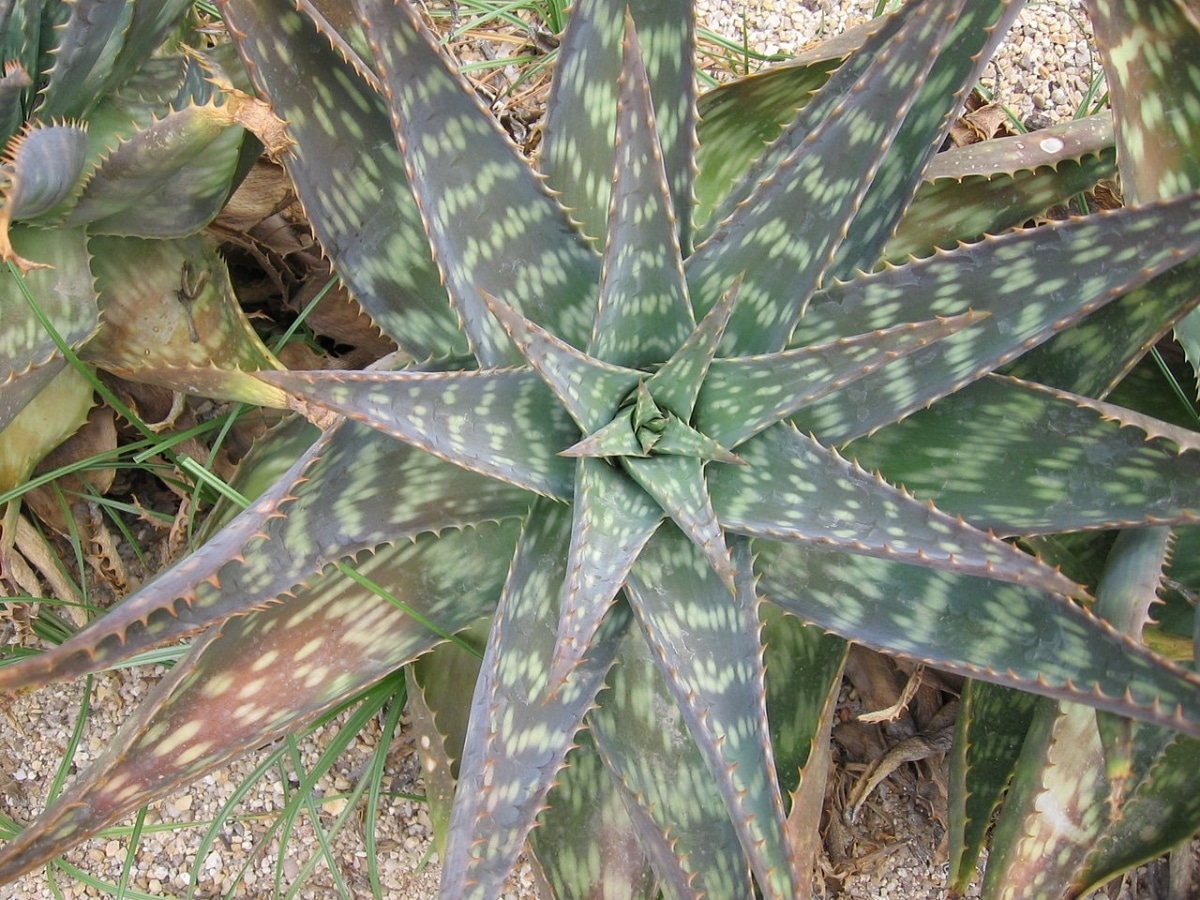
Image - Wikimedia / Digigalos
El aloe maculate It is a plant with fleshy dark green leaves with white spots that, unlike A. vera, always maintains. It grows up to 50 centimeters in height, and produces suckers at an early age, which can be separated in spring-summer. Its flowers are reddish orange, and it blooms in winter and spring.
Aloe x delaetii
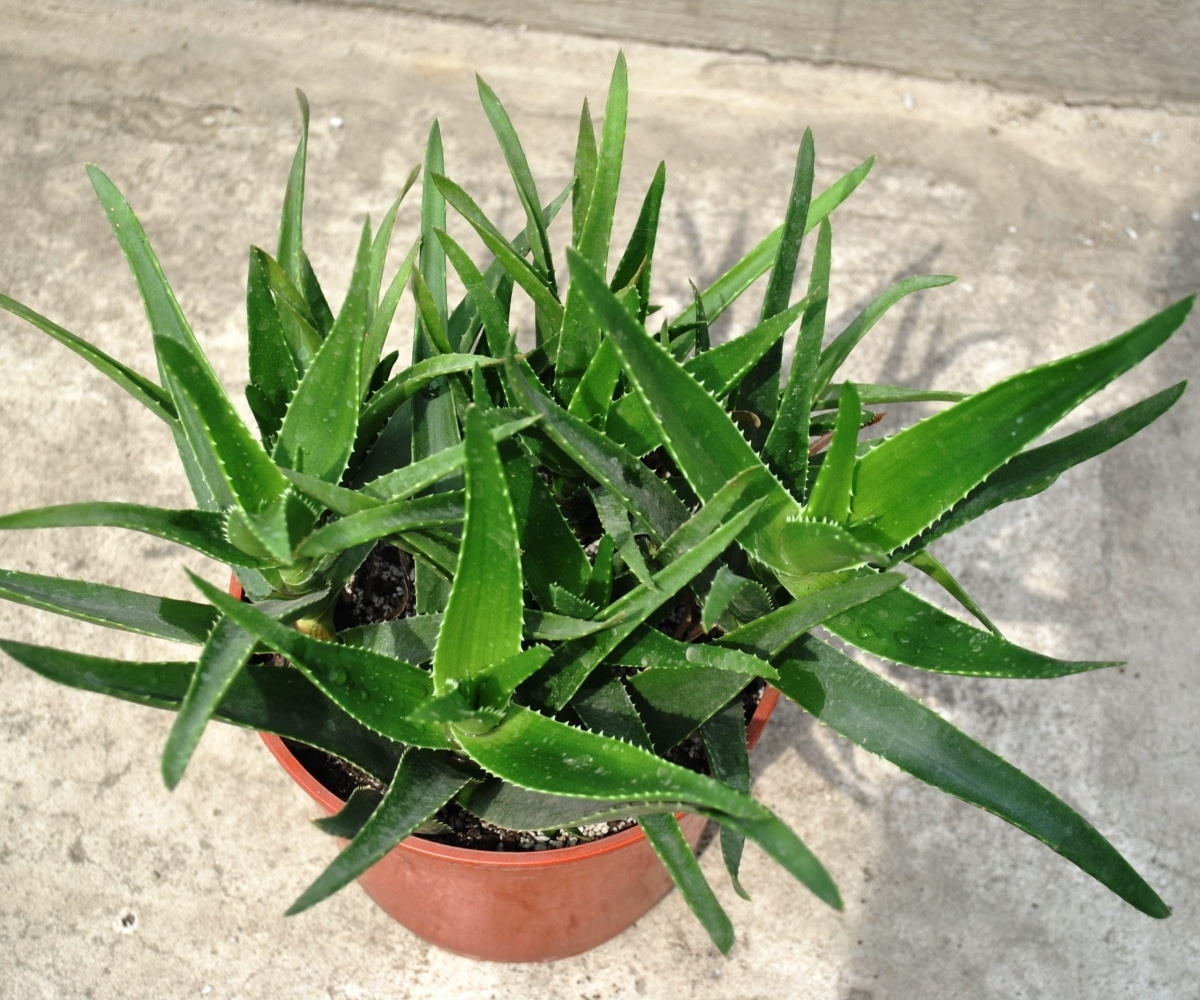
Image – cactus-shop.com
It is a hybrid between aloe ciliaris x Aloe succothrin, who has completely green leaves, without spots, with finely serrated edges. It reaches 50 centimeters in height, and produces green-orange flowers. It grows very fast, and puts out suckers very soon too.
Therefore, there is only one type of Aloe vera, and it is precisely that, Aloe vera.
Excellent catalog of Aloes, especially the identification of each species since many people confuse the true Aloe vera with others. Aloe vera has yellow flowers and its leaves are quite long. Greetings